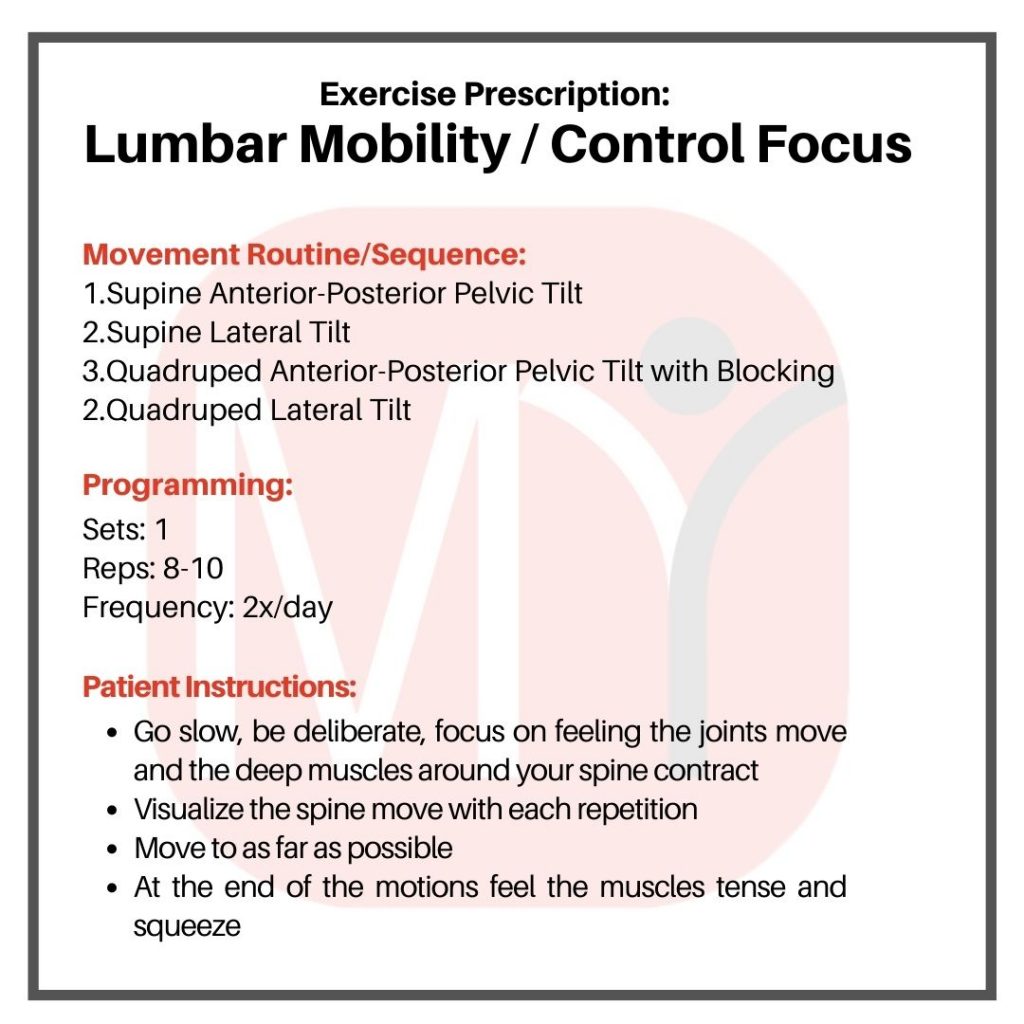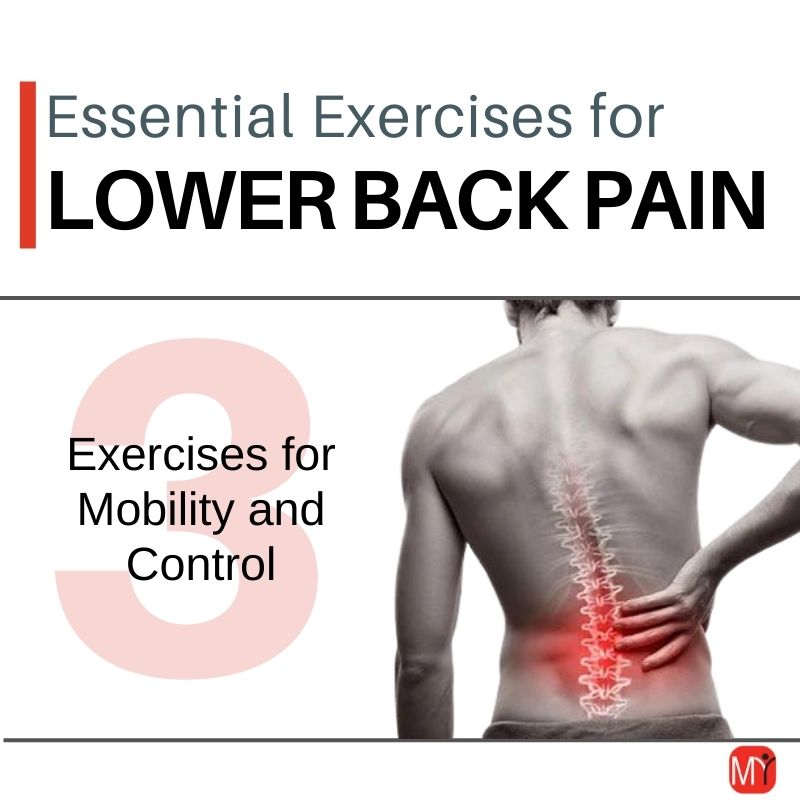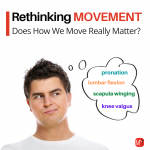In the last article we reviewed essential exercises for acute low back pain. The key there was to control symptoms and develop tolerance to basic spine motion. Now we want to shift our focus to more general back pain cases. These are the patients that present to your office but really don’t have any significant symptoms with basic movement testing.
In other words, it is difficult to reproduce their pain with your clinical testing.
Of course this doesn’t mean there’s nothing wrong. There may not be specific pain with basic spine motion, but you will find dysfunctional muscle or joint movement during your exam. This will come in the form of limited flexibility, strength, or poor control/coordination.
I put these patients in the “things just don’t work right” category. This may not be a specific or universally recognized diagnostic label, but I find it helpful (it’s just as helpful or accurate as other labels like “mechanical low back pain” or “non-specific low back pain”) as it helps convey to the patient the key focus of treatment. Which is to focus on getting the spine healthier and moving better.
How does movement relate to pain?
Of course pain is complicated. And we know there is a poor correlation between specific “faulty movement patterns” and pain syndromes (see our Rethinking Pain series). So when I say the focus is on getting the spine to move better I am not suggesting we need to promote any specific pattern of movement. We’re not trying to prevent excessive flexion, or create better muscle balance, or limit excessive movement of the spine per se.
What I am saying is we need to build basic fundamental joint health. The simplified view here is that healthier joints can do more while hurting less. And here I would argue that all joints need to have 3 basic things: Flexibility, control/coordination, and strength/endurance. Let’s break each of these down.
Flexibility
On the most basic level, joints need to move. That is the purpose of a joint. To allow motion between two bones. Sometimes this point gets lost on the spine, so let’s illustrate this with the arm.
For the arm to work properly the elbow needs to fully flex and extend. But during an upper extremity exam we found that an elbow could only flex to 100 degrees instead of the normal 150-160 degrees we would consider this an obvious problem.
Of course how this limitation would manifest symptomatically will be a little less clear. Maybe the elbow itself will be painful? Or maybe the symptoms will show up at the shoulder? The truth is you simply cannot consistently predict how a problem at one joint will influence other areas of the body. (Sorry, the body is just too complicated and patients will present with varying compensatory movement strategies.)
But from a treatment perspective I don’t think this matters as much as some people would have us believe. The goal is to normalize the system.
Remember when we say we want better movement what we really want is movement to be more variable and adaptable. And to do this we want to ensure each joint in the kinetic chain is functioning properly to give your body the most movement options. (see our Rethinking Faulty Movements article). So in this case we would want to do everything possible to normalize elbow flexion.
The same is true for the spine. Like the elbow, these joints are supposed to move. The difference here is that we don’t really have a spine. We have a series of intervertebral joints that form a moveable column. It’s like we have a whole bunch of elbows stacked together in series. And each of these intervertebral joints needs to contribute to motion of the spine. So the key is to get each of these individual joints moving in the best way possible.
Control and Coordination
But flexibility alone isn’t enough. We also need to access and utilize the available motion. And this relates to the ability of your CNS to control and coordinate joint movement.
The key take home point here is that movement is an automated process. Sure you can choose to lift your arm, walk, or climb stairs. But when doing so you don’t consciously decide how these movements occur. You don’t specify which muscles are used, or when or how hard or fast they contract. You just walk.
The conscious component of movement is task oriented. You are trying to accomplish a specific objective. To reach the glass in the cupboard or to get from here to over there.
Exactly how movement occurs is determined by your CNS. And this in turn requires effective communication between your brain and your body. It’s the mind-body connection. But if this communication isn’t there, or isn’t as established as it should be, the CNS will have trouble controlling and coordinating motion at the joint. In other words, the CNS doesn’t have full access to the available joint motion.
This doesn’t mean your body stops working. And it will not likely be a direct cause of pain. But it will limit how your body moves which will affect the overall health and adaptability of the spine.
Assessing Lumbar Control and Coordination
In addition to basing my spine rehab on pelvic tilts, I also use them as part of my exam. It is here where these control and coordination deficits are really evident. For example, if I ask a patient to perform a basic pelvic tilt from a quadruped position what I should see is smooth, effortless motion of the lumbar spine into flexion and extension. It should be easy to perform. And it should be pain free.
On the surface this may seem like a strange test. After all, it’s not a natural motion we perform regularly. But really we are just asking the patient to move their lower back up and down. But so many lower back pain patients have trouble doing this.
Instead of nice, smooth, focused motion at the lumbar spine they rock their whole bodies back and forth, press up or down with their arms, or press their whole spine up and down because their CNS can’t separate the lumbar and thoracic spines.
Let’s for a moment go back to our elbow example from above. Imagine I asked a patient with arm pain to simply bend their elbow. But instead of the elbow flexing they shrugged their shoulder, or their whole arm moved instead of just the elbow. Here we would absolutely and without fail recognize this as a major problem. The CNS cannot independently control the elbow.
I think we need to look at the spinal joints the same way. If we cannot move and control these joints through a full ROM in a calm, controlled setting, how can we possibly expect these joints to work properly with the more complicated and stressful movements we perform in our daily lives?
Strength / Endurance
Finally, a basic amount of strength and endurance is required for proper joint health and function.
Once again going back to our elbow example, if the patient in front of us was able to demonstrate basic flexibility and coordination with simply bending their elbow back and forth, we would also expect them to be able to to this holding a reasonable sized weight in their hand. Of course if they couldn’t we would want to build strength and endurance development into our treatment plan.
(We will dedicate a full article to developing spinal strength later in this series but I wanted to make a quick mention of this here. But for now let’s get back to the key focus on this article, building lower back mobility and control.)
The Exercises – Pelvic Tilts for Spine Mobility and Control
So again, we can utilize pelvic tilt exercises to help target mobility and control of the lumbar spine. While these may look similar to the exercises in the previous article, they’re not. The focus and execution here is completely different.
Move To End Ranage
With acute lower back conditions pain will limit available ROM of the spine. So the goal was to move as far as possible but to tolerance in an effort to “clear” the motion.
But here the focus is on building lower back flexibility and control. As symptoms no longer limit the movement the focus is now on moving as far as possible to the limit of the available motion. And we’re also going to focus on tensing and squeezing the spinal muscles at these end range positions to build better control of these outer ranges.
Movement Isolation is Key
Isolating movement at the intended area is also critical here. We want motion to occur at the lumbar spine and pelvis and only the lumbar spine and pelvis. Not only will this focus the movement stimulus at the lumbar spine, but it also teaches the CNS how to move and control the lumbar spine independently of the thoracic spine.
Be Deliberate
To be effective it’s critical that we don’t just go through the motions. To make changes in how the body works, especially in building control and coordination (remember this relates to the communication between our CNS and body) we need to be attentive and deliberate in our movements. While performing the exercises we need to pay conscious attention to how it feels and to visualize the motion as it occurs. To facilitate muscle control we need to be deliberate in talking to the muscles around the spine and creating muscle tension at the right muscles.
Here are the exercises…
Exercise Programming
To be effective we need to be deliberate not just with what we are doing, but also when. To make change in how the body works we need to provide a regular and frequent stimulus to promote these adaptations.
The key here is developing a focused movement routine that can be repeated 1-2x / day. (I tell patients once for sure.That’s non-negotiable. But twice would be better and result in faster gains).

Advanced Exercise Progressions
As you can see I am a big fan of these exercises. But even I know that they alone are not enough. But we can progress these exercises to increase the exercise demand. And we can also incorporate different positions and postures that help to mimic real-world demands and activities. This makes the exercises more “functional”.
That’s what we talk about in Part 4 of this series. Here’s the link.
Make Exercise Prescription Easier with MRC
As simple as these exercises are there is a lot of information that goes with them. Form is critical. And so is an understanding of what we need to feel and focus on during the movements. Of course reviewing this directly with your patient is necessary, but providing a means for your patient to reference this information and the proper execution of the exercises from home is also critical.
To help with this all of these exercises are part of the My Rehab Connection library. (The instructional videos used here are the videos from the exercise library.) So you can easily prescribe these to your patients and give them easy home access through our free app or from a web browser.
If your not already a subscriber you can find out more about our program here).







